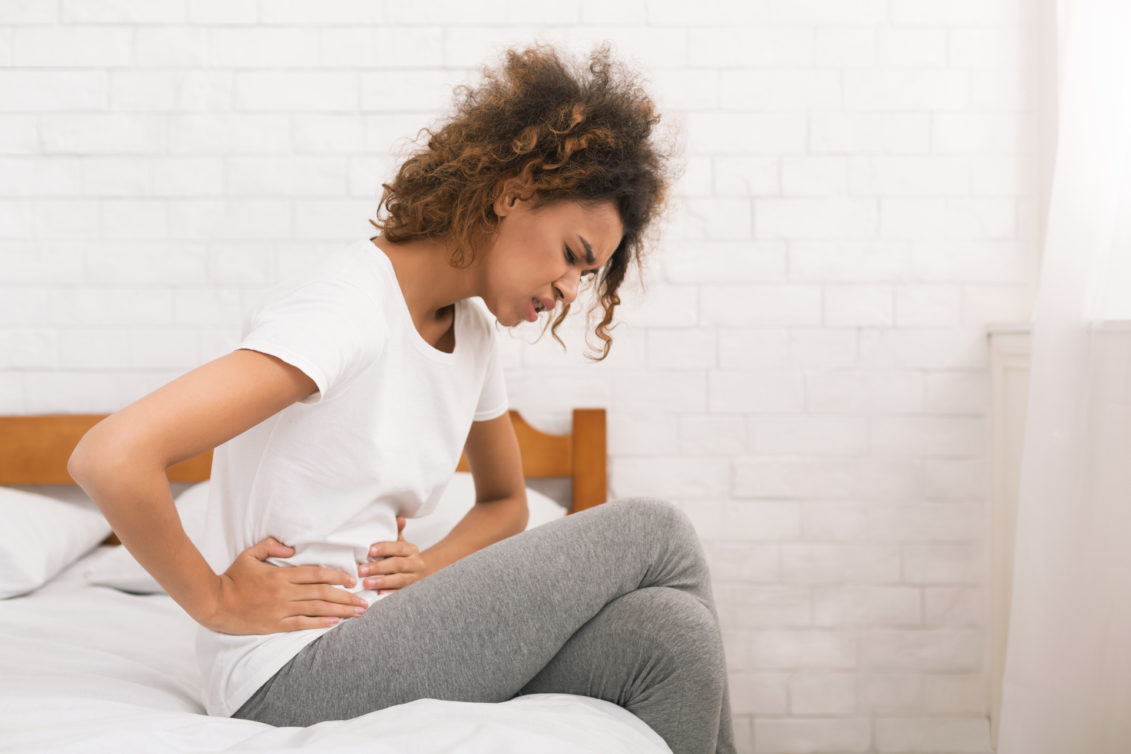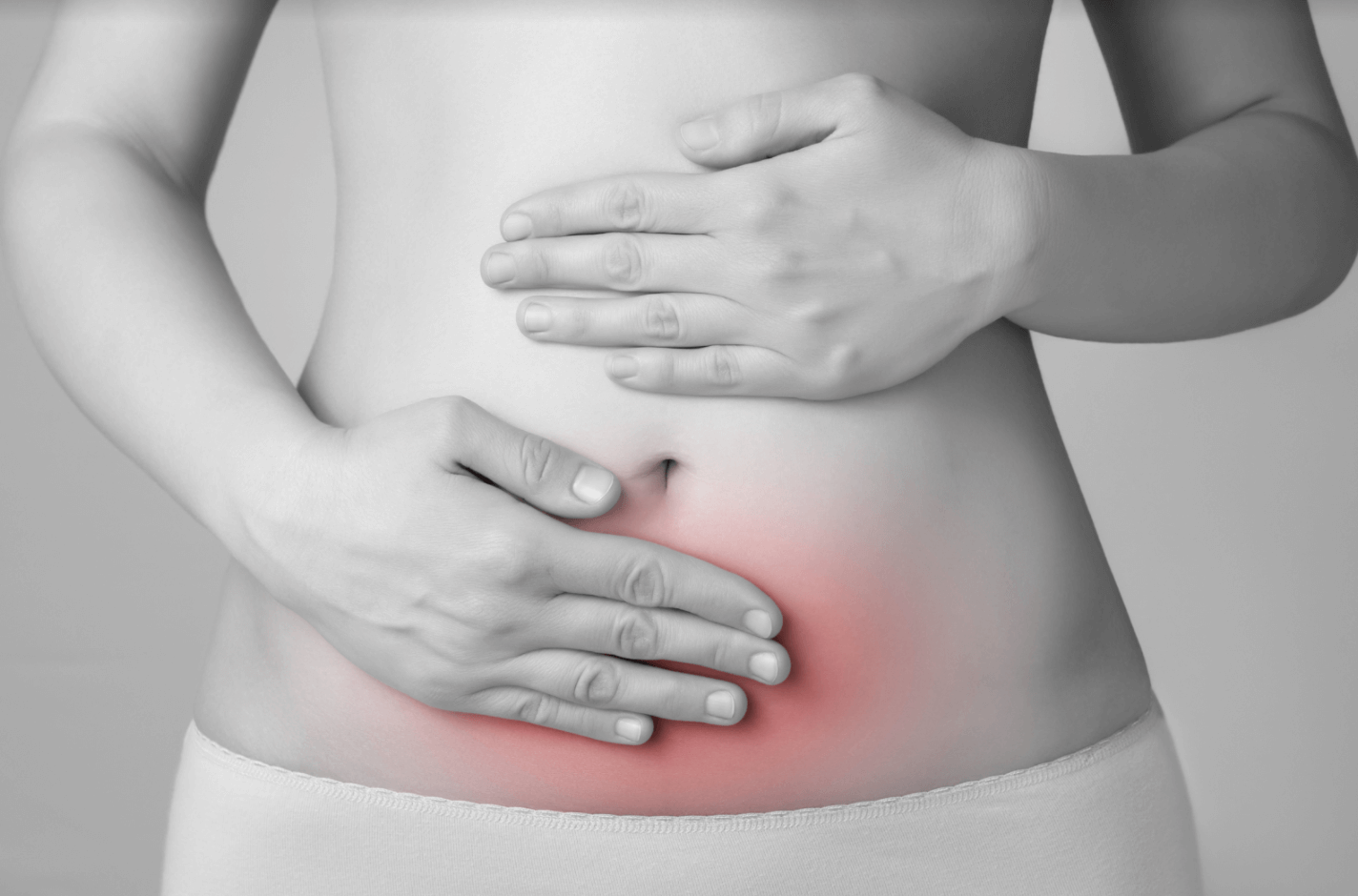
What are the Symptoms of Adenomyosis?
Adenomyosis is a common reproductive tract condition that affects approximately 20-35% of females. It occurs when the lining of the uterus grows into the muscular wall of the uterus. It most commonly affects women of childbearing age who have carried at least one pregnancy to term. In some cases, adenomyosis is asymptomatic or causes very mild symptoms. But, they can also be severe enough to interfere with your daily life, work, and overall health.
Adenomyosis of the uterus can be hard to diagnose since the symptoms are similar to other gynecological conditions, including uterine fibroids and endometriosis. If you suspect that you have adenomyosis, it may be helpful to know its symptoms, causes, and treatment options available to you. Schedule a consultation at American Fibroid Centers with an affiliated physician in NY or NJ to receive an accurate diagnosis today!

Common Adenomyosis Symptoms
Most women develop adenomyosis during the childbearing years, between 35 and 50. Symptoms of this condition typically go away after menopause. Adenomyosis is a type of gynecological condition that can result in painful and uncomfortable symptoms such as heavy periods, severe cramping, abdominal bloating, and an enlarged uterus. To get the treatment you need, It’s important to understand the difference between a regular menstrual cycle and abnormal signs of a more serious issue.
Painful Periods
Adenomyosis causes the endometrial tissue, which comes out during your period, to grow into the walls of the uterus. During your period, the displaced tissue can damage blood vessels and form pockets of blood in the uterine wall. This can lead to painful periods, preventing patients from going to work or school during their menstrual cycle. If you are experiencing painful periods, you should ask your doctor about adenomyosis.
Heavy Menstrual Bleeding
One of the most common symptoms of adenomyosis is heavy menstrual bleeding. The displaced endometrial tissue still behaves as it would if it lined the uterus, so it thickens and bleeds with a woman’s normal menstrual cycle. The excess build-up of blood and tissue causes the uterus to expand two or three times its original size. Heavy blood loss as a result of adenomyosis is a main cause of iron deficiency in women, putting them at increased risk of anemia.
Bleeding Between Periods
Women with adenomyosis sometimes experience irregular menstrual cycles, which can include bleeding between periods. This may be due to the movement of the womb lining into the muscle, damaging the blood vessels in the womb, and therefore causing bleeding at irregular times. In the early stages of pregnancy, there may be spotting and this can be mistaken for a period that has come early. If pregnancy isn’t an option, you may have adenomyosis.
Abdominal Pressure or Bloating
Adenomyosis can cause a wide range of digestive issues including constipation, nausea, and frequent urination. When the uterus becomes enlarged, adenomyosis puts excess pressure on your surrounding organs like the bladder, intestines, and rectum. Certain organs may be affected more than others depending on where the endometrial tissue grows. Stomach problems are quite common with adenomyosis and can make you feel like your body is out of control.
Enlarged Uterus
Depending on the severity of your adenomyosis symptoms, you may experience an enlarged uterus. As previously mentioned, when the endometrial tissue causes the uterine walls to thicken, the uterus may double or even triple in size. In some cases, you may notice a protruding abdomen, also known as “adenomyosis belly.” An adenomyosis belly can resemble a pregnancy of three to six months. If you also have uterine fibroids, they can grow large enough or multiple within the uterus to enlarge the uterus as well.
Pelvic Pain
Another common symptom of both adenomyosis and uterine fibroids is pelvic pain. With adenomyosis, pelvic pain can create a sharp, knife-like experience that becomes chronic over time. Pelvic pain may prevent you from enjoying normal activities such as sexual intercourse. A woman may become nauseous or bedridden if the pain is severe enough. It’s important to discuss all symptoms with your doctor that may be negatively impacting your emotional relationships and quality of life.
Early Adenomyosis Symptoms
Pain can be localized in one spot (focal) or throughout the uterus (diffuse) for patients with adenomyosis. Although symptoms can be debilitating, this condition is considered to be benign and not life-threatening. In the early stages of adenomyosis, women will experience no symptoms or mild symptoms, including:
- Mild period pain
- Heavy menstrual bleeding
- Bleeding or spotting between periods
- Abdominal pressure or bloating
- Enlarged uterus
Advanced Adenomyosis Symptoms
Symptoms of adenomyosis will vary from person to person, depending on the location and extent of the condition. Women with diffuse adenomyosis more commonly experience period pain and heavy menstrual bleeding, whereas those with focal adenomyosis more often experience primary infertility. Advanced symptoms of the condition include:
- Severe period pain
- Excessive menstrual bleeding
- Pain during sexual intercourse
- Chronic (ongoing) pelvic pain
- Low iron and anemia
- Infertility
Adenomyosis Symptoms Frequently Asked Questions
Although you can develop adenomyosis at any time, women are most likely to experience the condition in their late 30s to mid-50s. Adenomyosis is often misdiagnosed because it creates symptoms that are very similar to other reproductive health issues; most commonly uterine fibroids and endometriosis. Symptoms of adenomyosis can range from mild to severe, and some people don’t realize they have it at all. The most common signs and symptoms of adenomyosis are painful periods, heavy or prolonged menstrual bleeding, abdominal pressure or bloating, enlarged uterus, and pelvic pain. If you are experiencing any of these symptoms, schedule a consultation at American Fibroid Centers today.
Initially, your doctor will perform a pelvic examination to look at your vulva, vagina, and cervix for any abnormalities. In most cases, imaging tests are needed to provide a complete and accurate diagnosis of adenomyosis. Your doctor may use transvaginal ultrasound (TVUS) and/or magnetic resonance imaging (MRI) as a means to diagnose this condition. Adenomyosis is mainly located in the fundus of the uterus and is commonly observed in the posterior wall. The typical appearance is a large, asymmetrical uterus, with small myometrial cysts and a “junctional zone” thickness of at least 12mm. There are two forms of adenomyosis: diffuse, which is distributed throughout the uterus, and focal, also called adenomyoma, which affects a limited area.
Adenomyosis can sometimes be confused with uterine fibroids, which are benign tumors that can develop in or on the uterus. However, they are distinct conditions that involve similar but different symptoms and treatment methods. While fibroids are muscular tumors that grow individually or in clusters, adenomyosis is a less-defined mass of cells located within the uterine wall. Symptoms of adenomyosis that differ from fibroids include prolonged menstrual bleeding, chronic pelvic pain, leg pain, and blood clots in the pelvis and legs. The best way to determine if you have adenomyosis or fibroids is to get diagnosed by an American Fibroid Centers’ affiliated physician.
Our Adenomyosis Specialists
At American Fibroid Centers, our board-certified, affiliated physicians specialize in adenomyosis treatment. They are here to help you find relief from your uncomfortable symptoms using the most advanced technology and minimally invasive techniques. Find your nearest location in NY or NJ to schedule a consultation with an affiliated physician or learn more about Uterine Artery Embolization (UAE) today!
What Our Patients Are Saying
Learn more about our patients’ experiences at American Fibroid Centers.
From the Experts
Get to know more about the symptoms, causes, treatment, and care of Uterine Fibroids.













